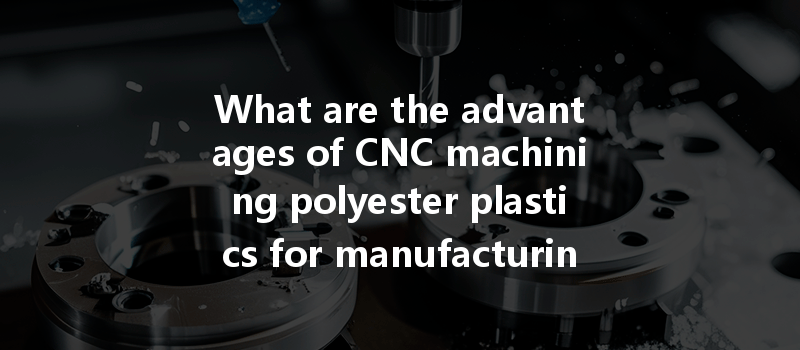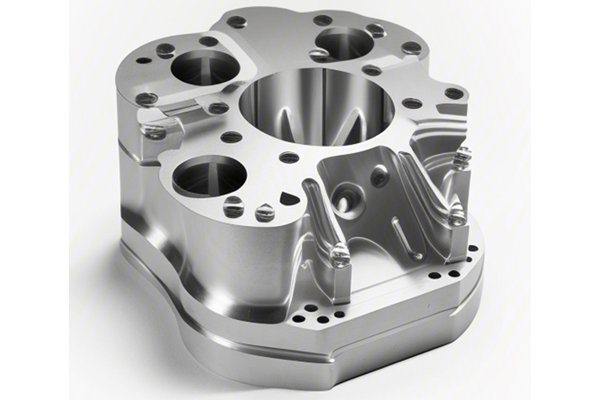Did you know that the global market for polyester plastics is expected to reach approximately $20 billion by 2025? As industries continuously evolve and seek innovative materials for manufacturing, polyester plastics have become a cornerstone for engineers and designers. Yet, despite their rising popularity, many still overlook one of the most effective methods for shaping these materials: CNC machining. This blog will delve deep into the myriad advantages of CNC machining polyester plastics, highlighting its transformative potential for manufacturing applications.
to CNC Machining and Polyester Plastics
CNC, which stands for Computer Numerical Control, refers to a process that utilizes software to control machining tools. This technology has revolutionized manufacturing by allowing for precise cuts, consistent quality, and complex geometries that were once impossible to achieve manually.
Polyester plastics, on the other hand, are a class of polymers that exhibit remarkable ductility, resistance to moisture, and versatility in application. This type of plastic can be molded into various shapes, making it ideal for a wide range of products, from automotive components to electronic casings.
CNC machining polyester plastics is an intelligent choice for many manufacturers, offering solutions that address common challenges, enhance production efficiency, and optimize resource utilization. In this comprehensive guide, we will examine the key advantages of utilizing CNC machining for polyester plastics and explore the nuances of the process.
Chapter 1: Advantages of CNC Machining Polyester Plastics
1.1 Precision and Consistency
One of the significant benefits of CNC machining is its ability to achieve unparalleled precision. This level of accuracy is crucial in industries where even minuscule deviations can result in product failure or inefficiency.
How it Works:
CNC machines operate with high-speed cutting tools controlled by pre-programmed software. This means the machines can produce parts to specifications that are often measured in microns (a millionth of a meter). The repeatability of CNC machining ensures that identical components are produced consistently, which is essential for large-scale manufacturing.
1.2 Complexity in Design
CNC machining allows for intricate designs to be created with relative ease. This adaptability means that today’s prototypes can be produced without the limitations that traditional machining methods present.
Benefits for Designers:
1.3 Material Efficiency
CNC machining is known for minimizing material waste. Traditional machining often results in substantial scrap because of its subtractive nature, where more material is removed than what is needed for the final product. CNC machines can strategically plan cuts to maximize material usage.
Sustainable Practices:
1.4 Versatility in Applications
CNC machining can be employed in various applications, from creating small components for consumer electronics to producing larger parts for automotive applications.
Industries Benefiting from CNC Machining of Polyester Plastics:
1.5 Improved Surface Finish
Quality of surface finish is essential in many applications, especially in industries such as healthcare and consumer products, where aesthetics and cleanliness are paramount.
The Advantage:
CNC machining enables tighter tolerances and smoother finishes than many traditional machining techniques. This advantage provides manufacturers with products that meet or exceed industry standards, ensuring high-quality output.
1.6 Cost-Effectiveness
While the initial investment in CNC technology may be significant, the long-term savings often outweigh these costs. Reduced labor costs, minimal waste, and the capability to produce high volumes of quality parts all contribute to lower overall production costs.
Factors to Consider:
Chapter 2: Process of CNC Machining Polyester Plastics
Understanding the advantages of CNC machining polyester plastics is essential, but so is grasping the process itself.
2.1 Material Selection
The first step in CNC machining is choosing the appropriate type of polyester plastic based on the required properties and application. Common types of polyester plastics include:
2.2 Design and CAD Modeling
Once the material is selected, the design phase begins. Software programs like AutoCAD or SolidWorks are commonly used to create Computer-Aided Design (CAD) models.
Importance of CAD:

2.3 CNC Programming
After the design is finalized, the CAD model is converted into a manufacturing plan. This involves creating a Computer-Aided Manufacturing (CAM) program that defines:
2.4 Machining Setup
Once the CNC programming is complete, the next phase is preparing the machine. This includes loading the polyester material onto the machine and selecting the appropriate cutting tools.
2.5 Machining Cycle
With everything in place, the CNC machine begins the machining cycle. Throughout the cycle, sensors ensure the machine operates within set parameters, monitoring variables like pressure and temperature.
2.6 Inspection and Quality Control
After machining is completed, the finished part must be inspected for quality and precision. This step is crucial to ensure that the part meets specifications.
2.7 Post-Processing
Finally, some parts may require additional finishing processes, such as sanding, painting, or applying coatings, to enhance their properties or aesthetic appeal.
Chapter 3: Challenges and Solutions in CNC Machining of Polyester Plastics
While the advantages of CNC machining are compelling, there are challenges that manufacturers may face when working with polyester plastics.
3.1 Material Properties
One of the greatest challenges is understanding and managing the specific properties of polyester plastics, such as temperature sensitivity and brittleness.
Solutions:
3.2 Equipment Limitations
Not all CNC machines are created equal. Some older models may not be equipped to handle polyester plastics efficiently.
Solutions:
3.3 Skilled Workforce
A well-trained workforce is crucial for operating CNC machinery efficiently, especially when dealing with specialized materials.
Solutions:
Chapter 4: Future Trends in CNC Machining of Polyester Plastics
As technology advances, CNC machining’s role in manufacturing polyester plastics continues to grow. Here are some future trends to watch:
4.1 Automation and Robotics
The integration of robotics and automation systems in CNC machining can significantly enhance productivity by reducing operator workload and increasing precision.
4.2 Advanced Materials
New types of polyester plastics with enhanced properties are continually being developed. These materials promise greater durability, heat resistance, and sustainability, making them more suitable for diverse applications.
4.3 Sustainable Practices
As manufacturers become more eco-conscious, finding ways to minimize waste and utilize recycled materials will become essential. CNC machining technologies are evolving to accommodate more sustainable practices.
In conclusion, the benefits of CNC machining polyester plastics are substantial, offering significant advantages in precision, complexity of design, material efficiency, improved surface finish, and cost-effectiveness. This technology caters not just to the growing demand for polyester plastics but also aligns with contemporary practices emphasizing sustainability and innovation.
As industries continue to leverage CNC machining, it is vital for manufacturers to remain informed about developing trends and techniques in the realm of CNC machining. Staying ahead in this field allows companies to tap into new markets and respond effectively to consumer needs.
The exploration of CNC machining polyester plastics not only highlights the transformative potential of this technology but also urges manufacturers to embrace these innovations for long-term success. As you consider the insights provided in this blog, ask yourself: How can CNC machining enhance your manufacturing processes and lead to exceptional results? The answers may redefine your operational strategy and elevate your product offerings in an ever-competitive landscape.






